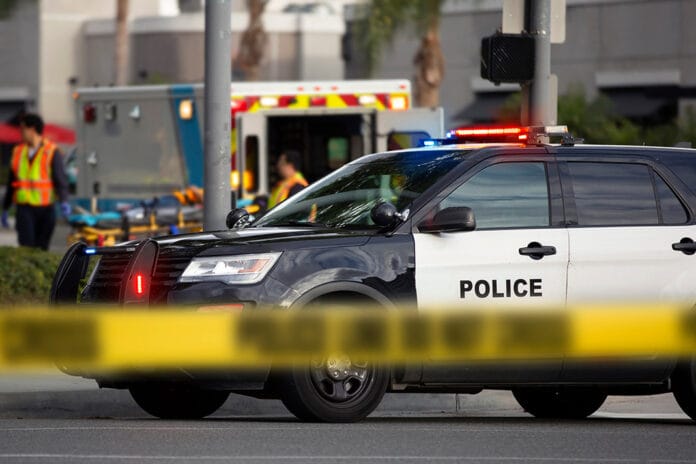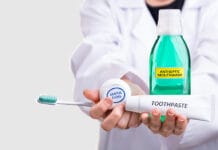A few things will make us become paralyzed with shock and horror during our lives. One is the senseless loss of human life due to the work of a deranged killer, and such events stupefy us even more when the victims are children. Another school shooting has occurred in Texas, and I believe it is affecting many of us in quite complex ways.
Afterward, I began to think about how vulnerable we are in these days and times ‒ in schools, churches, grocers, and even at our workplace. Texas, just two months prior to the heinous school event, had another shooting and this time in a dental practice. Two dentists were murdered, and the staff, patients, and families will be traumatized for life. I would like to imagine this was an isolated incident, but it is not. Two years ago, a woman threatened to kill an entire office due to a rescheduled appointment; another happened in Tennessee, where a gunman, a school bus driver, shot and killed his wife, who worked at a dental practice.1,2 Back in 2009, a Simi Valley, California dental practice was the scene of a four-person shooting that killed one. One incident is enough to make us concerned.3
Security Assessments for Dental Offices
Schools have safety drills that include fire, weather, and an intruder. I have never been in a dental practice with a protocol for a disturbance in the office. Frankly, the “fire” procedure is a piece of paper taped to a wall somewhere that I assume says to get to the closest door as fast as my legs will get me there. Oh yes, and bring my patient with me.
Having worked in Oklahoma for most of my career, I would have thought we would do a bit of the tornado lessons, but we all inherently knew to crowd inside the one bathroom and hope for the best. From hospitals to nursing homes, health care facilities have hostile intruder policies and procedures, and dental offices should be no different. Honestly, most tips suggested will not only help us in a work setting but anywhere we may encounter a horrific situation.
Steven Wilder, who has spent more than 30 years in safety, security, and risk management and served as safety and security for Provena Health with nine hospitals and 15 long-term care facilities, has some tips we can work with.
1) Perform a security vulnerability assessment
- What are the potential threats? What or whom?
- What are our vulnerabilities? What would allow an intruder or event to happen?
- What are the potential risks?
- How do you minimize the vulnerabilities?
2) Develop an active shooter response plan
- Locate exits
- Potential hiding places
- Barriers to be put between people and the shooter
- Find “weapons of opportunity” that can be used to defend against the attacker
- Protocols in place for when and how to contact emergency responders
3) Calling 911
- Do not assume others have called
- Continue to call if the signal is busy
- Give important information such as the name of the shooter, description, location, number, and type of weapons
4) Develop a training program
- Survival is often a result of training
- Everyone should be trained and always include new hires
The long-term care industry follows a safety action plan called the “Four Outs.” The first is get out (run). If you are able to, consider not running in a straight line. Our offices are so small it may not be possible, but if you get outside or in a larger environment, it’s a consideration. If you can get the patients and staff out of the building, the less chance there is of being a victim.
Hide out and keep out is exactly that. Find a place to hide and make it secure. Turn off the lights if possible and make the room look unoccupied. Remember to silence cell phones. Like in many health care facilities, dental offices don’t have rooms with a lock on the door or, in our case, a door, period. Barricade using what you can.
If you are in a secure spot, wait until a uniformed officer gives an all-clear. This may take time, and sometimes intruders will pretend to be responders to trick you. The first officers that arrive on a scene do not render aid. Their focus is solely on the intruder. If you are with someone that is injured, try to do your best first aid if at all possible.
In Steven Wilder’s plan, there is a section about fighting back or “take out.” His examples are to use chairs, heavy lamps, phone cords, and any available “weapons of opportunity One that comes to mind is a Bard Parker Blade.
Recovery from an Incident
Lastly, plan for the recovery process that may take days, weeks, or months. Gather resources as listed below now for the staff, patients, and the physical facility.
Have a list of mental health services ahead of time, but there may also be other issues to deal with. There are recovery firm specialists to perform biohazard cleanup and restoration to put the office back together. We should consider ourselves as a victimized practice, and searching for outsiders to help regain order will undoubtedly help the traumatized staff. Hiring a consultant to help with media, legal, and insurance issues is an option. Consulting companies are available for hire that will help you plan and put a system in place so your steps following an event will be as seamless as possible. Look in your area or reach out to your own lawyer for advice.
If you want to plan on your own, please consider a couple of things. The media can be unrelenting, especially if there is a fatality. Naming a company spokesperson with the business details, such as the number of employees and company history, can be helpful. If you choose to answer media questions, be brief and only give information that you are comfortable reading in the paper or online the next day. Have an agreement with your staff if you do not wish for them to speak to the press and never lie; you don’t need another headache.
The financial ramifications can be significant. A workplace violence incident is covered under an employer’s workers’ compensation insurance as a general rule. Employees who face injury or death from a co-worker at work are covered by the “exclusive remedy” provisions of the federally regulated program. The provision gives employees an immediate remedy for their injuries, limiting the employer’s liability.
However, there are separate policies because there are gaps between worker’s comp, business interruption, and general liability insurance, and the policies may not cover to the degree you need. Historically, policies were recommended for businesses that serve alcohol, are open late at night, are high stress (hello), or are in the restructuring process. Truthfully, it might be a good time to have a conversation with your insurance agent. Ask about a “workplace violence” policy.
The conversation is ripe to be had in our offices. It is challenging and may trigger a host of emotions for the team. We all know that it doesn’t matter where you live. In big cities or small towns, there is a risk. Whether we are at our dental office, at a dental conference, or still in school, we need to be prepared. I think it is like being trained in CPR/BLS. We may never use our skills, but when we do, we will be as ready as we can be.
Bless the littles. “Our children are our only hope for the future, but we are their only hope for their present and their future.” Zig Ziglar
References
- Utah Woman Threatened to Shoot Everyone in Dentist’s Office over Rescheduled Appointment: Police. (2019, August 31). Tribune Media Wire Pix 11. https://pix11.com/news/police-utah-woman-made-shooting-threat-against-dentists-office-over-rescheduled-appointment/
- Suspect in Tennessee Dental Office Shooting Identified as School Bus Driver. (2019, February 14). WATE ABC 6. https://www.wate.com/news/tennessee/suspect-in-tennessee-dental-office-shooting-identified-as-school-bus-driver/
- 1 dead, 4 hurt in Simi Valley Shooting. (2009, July 1). ABC 7 Los Angeles Eyewitness News. https://abc7.com/archive/6893941/









